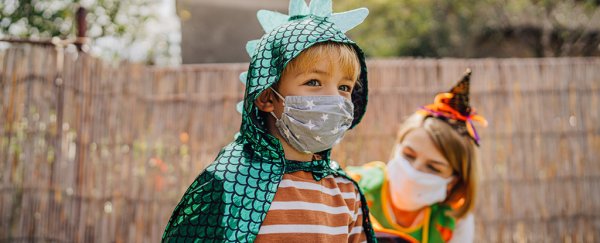The human immune system relies on an intricate army of T cells, B cells, macrophages and many more, all keeping us safe from invading pathogens. But that doesn't mean we all have the same set of protective gear in our blood.
B cells are responsible for 'remembering' what pathogens our bodies have previously encountered, so they can sound the alarm if they stumble upon these once more. Depending on which diseases you've already been exposed to and how the cell receptors - which hold this 'memory' - mutate and change, each person carries a different variation of immune cells.
A team of researchers has now looked into how these immune cells differ not just between individuals, but how they might change over a person's lifespan.
Interestingly, they discovered that blood taken from children before the pandemic had a higher frequency of B cells that could bind to SARS-CoV-2 than adult blood did, even though they had never been exposed to this novel virus.
This research is still in the early stages, but it could go some way to explain why children seem to fare a lot better than adults when it comes to falling ill with COVID-19.
"Children usually have milder disease following SARS-CoV-2 infection than adults, potentially due to differences of viral receptor expression and immune responses," the team writes in their new paper.
"Infected children, in contrast to adults, show lower antibody titers and more IgG specific for the spike protein."
A type of white blood cell, B cells hold the 'memory' of past pathogens in a wide range of receptors on their cell surface. These receptors allow B cells to bind to bits of potential pathogens they can recognize - called antigens - like a puzzle piece, launching an immune response against them.
These receptors are all built on the same backbone known as immunoglobulin sequences, but can be switched around or mutated to form a whole range of pathogen busting receptors before the bacteria or virus even enters the body.
"It is still unclear, however, how B cell memory to different antigens distributes in human tissues and changes during an individual's lifespan," the team notes.
This latter point is what the Stanford University researchers set to find out. They analyzed 114 blood samples from healthy human adults, 93 samples from 51 children between one and three years old, 12 umbilical cord blood samples, and blood, lymph nodes and spleen samples from 8 organ donors.
When the team looked at the B cell receptors and analyzed which antigens the cells can target, they found that children's B cells had more shared 'clones' for viruses and bacteria they'd already encountered than adults.
They also had more B cells that could 'switch' to become effective against SARS-CoV-2, without having been infected first.
The team thinks this could be because kids' immune systems are better at switching to a wide range of antigens after having been exposed to a different, less dangerous coronavirus than the one responsible for the current pandemic.
"We hypothesize that previous human coronavirus exposures may stimulate cross-reactive memory, and that such clonal responses may have their highest frequencies in childhood," the team writes.
"Childhood immune responses are particularly important in an individual's life, as they form the initial memory B cell pool that shapes future responses."
There's likely going to be a number of factors responsible for children having generally milder COVID-19 symptoms, so there's plenty more research to be done. Still, this is an interesting part of the conundrum and provides insight into the flexibility of B cells during our childhood, including setting us up for future immune responses.
The research has been published in Science.
